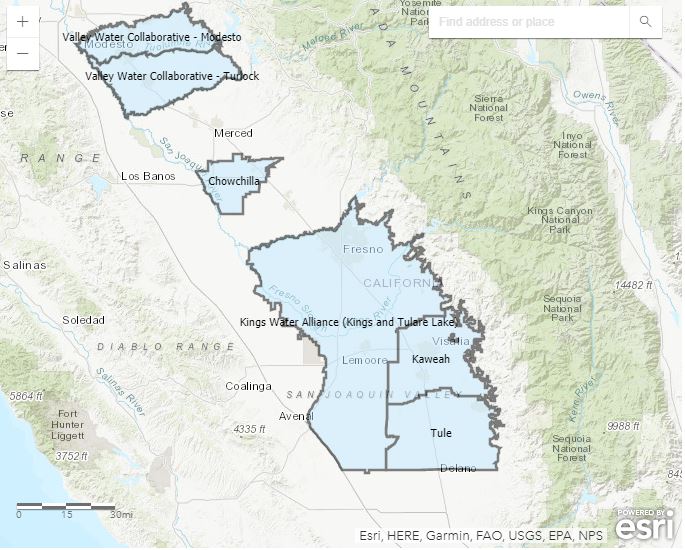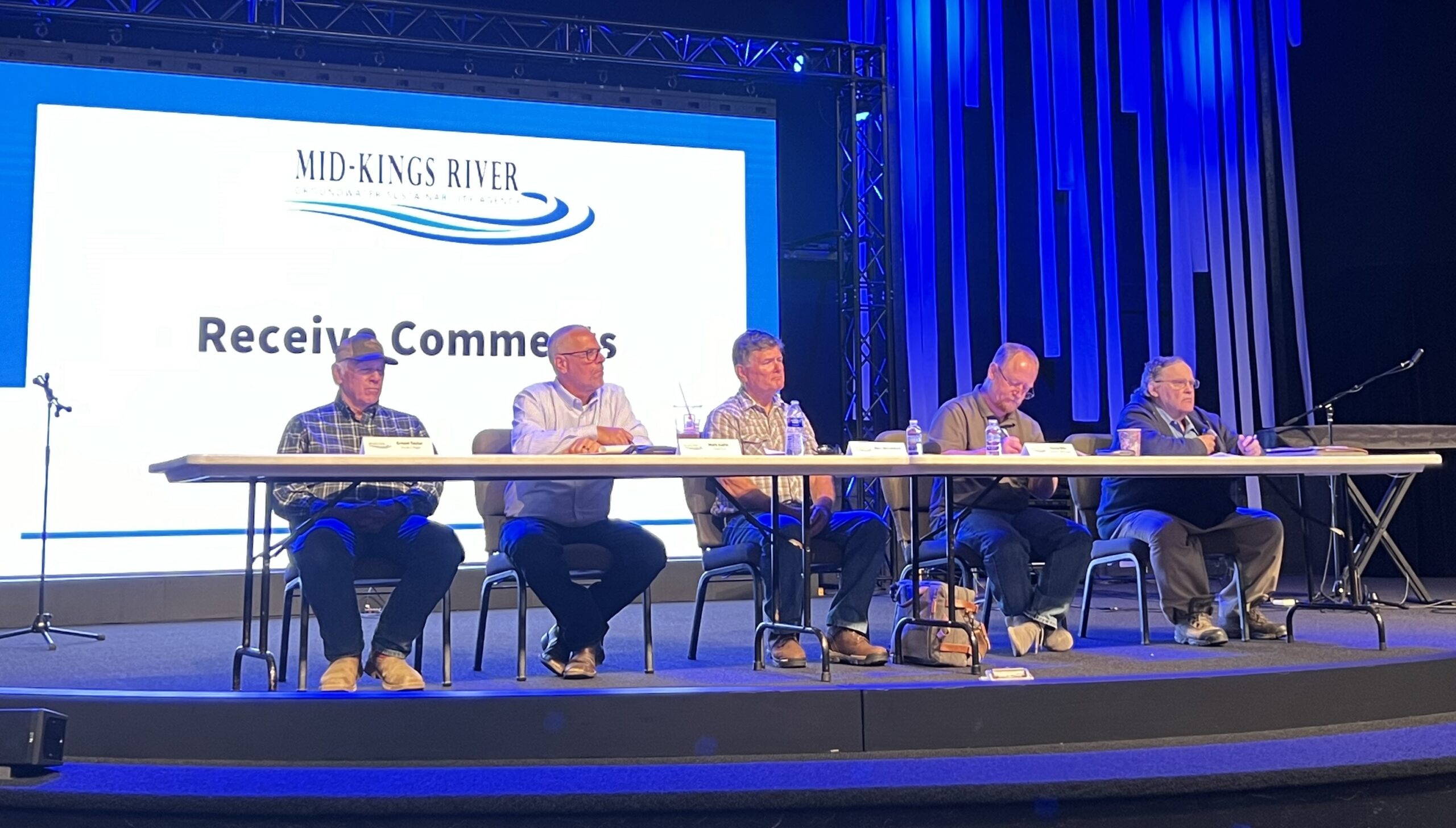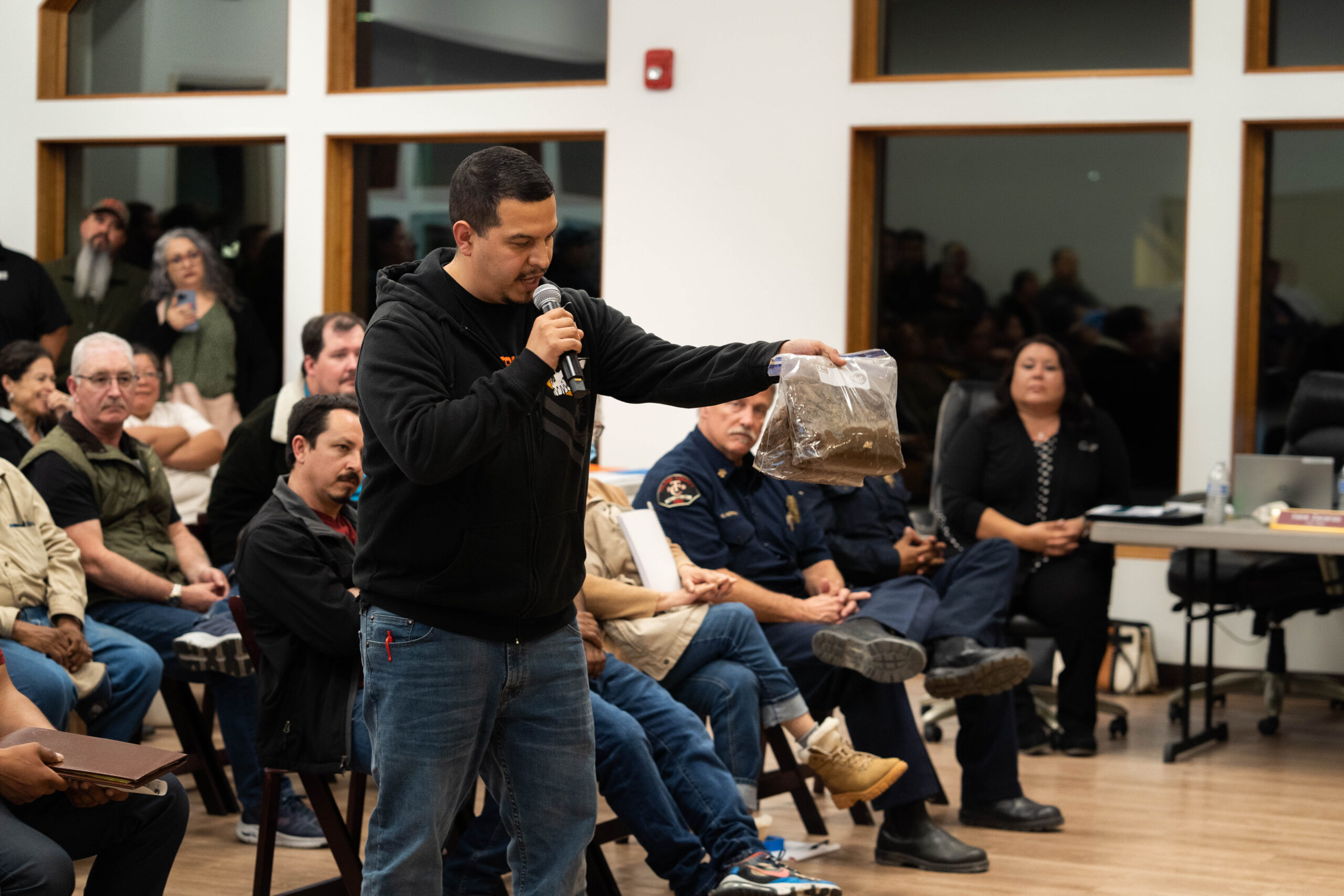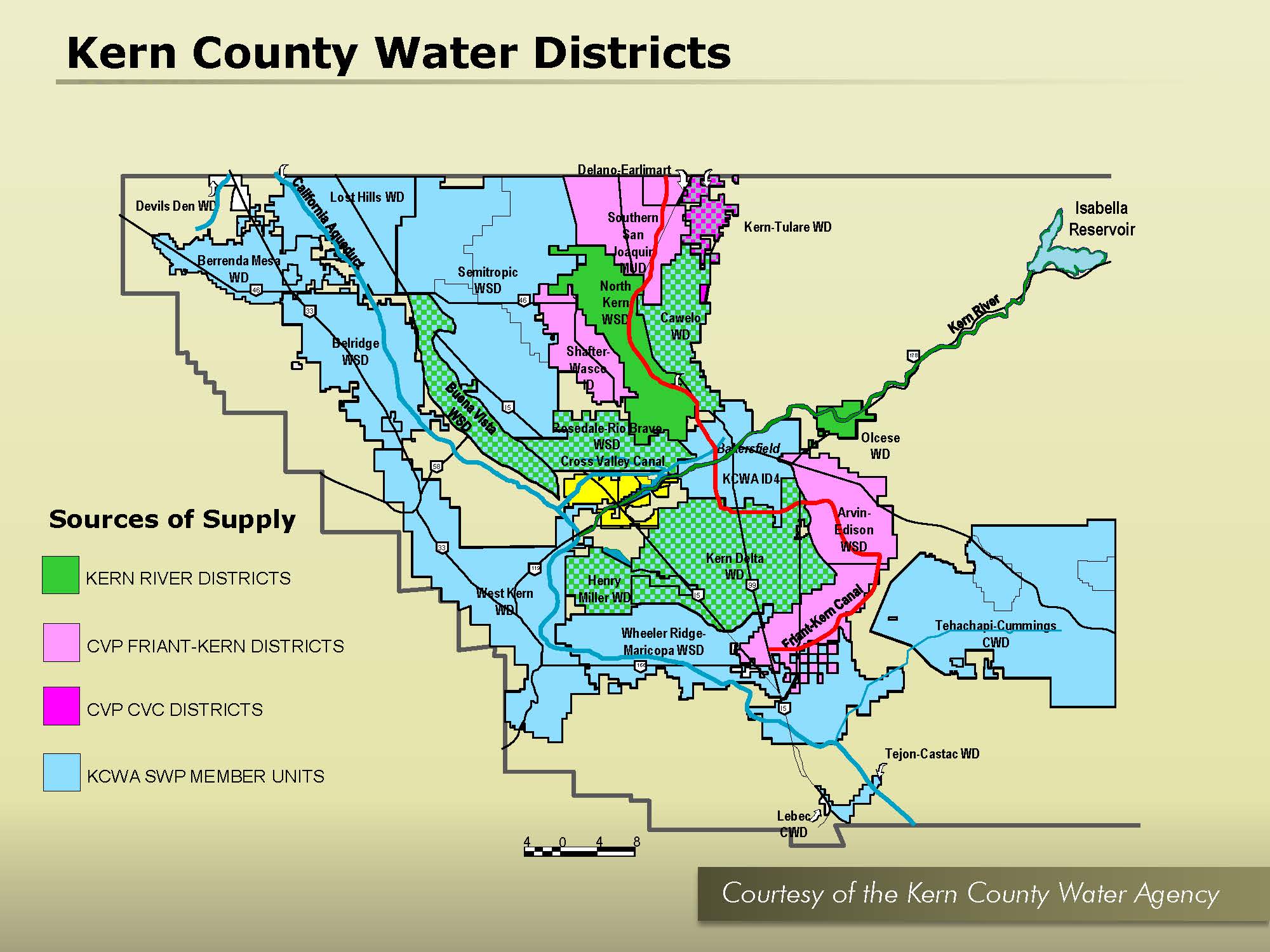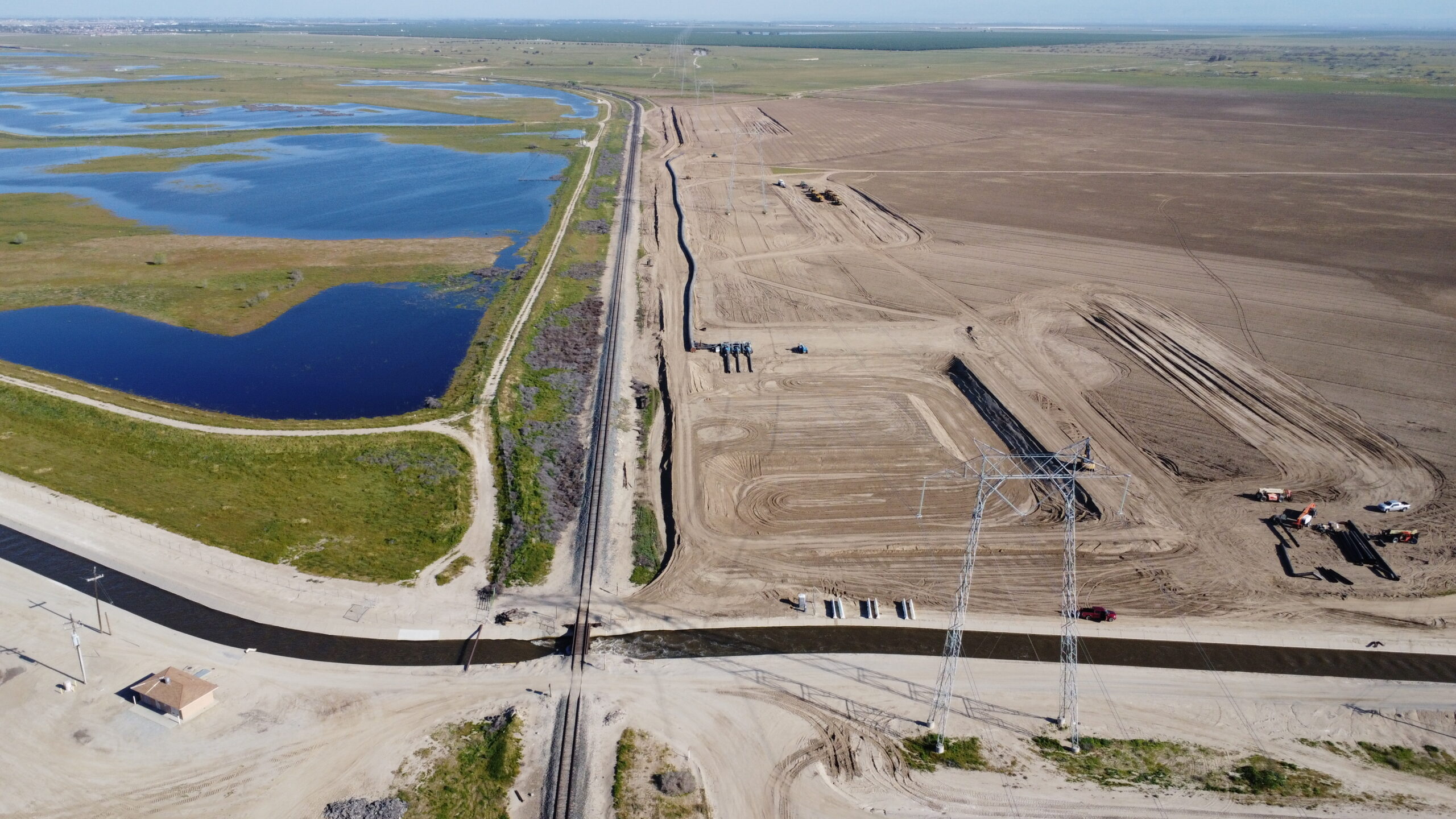When Sandra Chavez’ mother discovered she had stage four cancer last year, one of Sandra’s first thoughts was about their water. Her family’s private well is contaminated with nitrates and Chavez wondered if years of drinking the water could have caused her mother’s sickness.
Chavez and her family have relied on bottled water since they found out their well water was unsafe in 2015. But sometimes they don’t have enough and are forced to drink the contaminated water. So when Chavez found out about a new program providing free bottled water delivery for families with nitrate-contaminated wells, she was frustrated she hadn’t been contacted.
“They’re the ones responsible for reaching out to my family and families that have the same issue as mine,” said Chavez. “It’s very negligent of them.”
She referred to the Tule Basin Management Zone, a new organization created to carry out requirements issued last year by the Central Valley Regional Water Quality Control Board to get rural residents with nitrate-laden wells clean drinking water immediately and then work on a longer term fix.
Yes, the organization has lagged on public outreach, agreed Tule Basin Management Zone technical lead David De Groot.
But it was waiting for the Water Quality Control Board to come up with final rules before creating its plan, De Groot said.
“Tule was unsure of exactly what the final regulatory documents were going to be,” said De Groot. “We did not start the process until everything was adopted.”
The board didn’t buy that explanation and on May 7, rejected the Tule Basin Management Zone’s plan and gave it 60 days to come up with a new one.
“The effort was sorely lacking,” said Patrick Pulupa, executive officer of the Central Valley Regional Water Quality Control Board, of Tule Basin’s original plan.
The Tule Basin Management Zone, which covers the southwestern portion of Tulare County, is one of six management zones formed by nitrate dischargers to address the decades-long problem of unsafe drinking water in the San Joaquin Valley. The six management zones encompass the state’s most contaminated groundwater subbasins and were required to create plans to get safe drinking water to residents. Management zone members including dairies, manufacturers, farmers and more, are funding the program.
In parts of Stanislaus, Madera, Kings and Tulare Counties, residents on domestic wells or very small drinking water systems can apply for free nitrate testing. If their water has unsafe levels of nitrates, they can receive free bottled water.
Wide scale and personal
The Water Quality Control Board demanded management zone managers include residents in their planning to make sure they were being accommodated. Some residents in poorer, rural areas don’t have cars to drive to central “fill stations,” for example. So the board wanted plans for how management zones would get clean water to those folks. To get that in-depth, management zone managers needed to connect with residents on a wide-scale but still personal level.
That was tough during a pandemic, Tule Basin’s De Groot noted.
Still, other management zone managers made an effort.
Some created bilingual flyers, mailed out postcards, involved local schools, or held online public meetings.
“I think Tule failed all together on that point,” said Michael Claiborne, an attorney for the Leadership Counsel for Justice and Accountability.
The lax Tule Basin plan would likely result in many residents without drinking water solutions, said other organizations.
“The dischargers are being forced to pay for solutions but if you’re not outreaching to people, you don’t have to implement solutions if no one asks for them,” said Debi Ores, senior attorney for the Community Water Center.
The Water Quality Control Board conditionally approved every management zone plan except the Tule Basin plan.
“There’s a whole spectrum of engagement that’s occurred throughout the management zones,” said Pulupa.
Tule Basin was on the “very low end” of that spectrum, he said, adding that it was clear Tule had cribbed parts of other management zone plans and allowed for a very small window of public review before submitting its plan.
He said Tule Basin has about 10,000 rural residents in need of safe drinking water, a relatively small population compared to management zones with five times that number.
Playing catch up
The Tule groundwater subbasin sits in one of the worst counties in the state for contaminated drinking water. In a drinking water needs report published in April by the California State Water Resources Control Board, Tulare County ranked in the top five counties with the most domestic wells in high risk areas for contaminants. The report estimated it could cost almost $400 million to address problems in Tulare County alone.
De Groot said Tule Basin managers are planning on meeting with community members and leaders to get the word out and learn more about residents’ needs. Tule Basin is also working with an advisory committee of organizations and stakeholders to help guide its future outreach efforts.
“We realize we’re playing a little bit of catch up here,” said De Groot. “Hopefully we can get out there in the public and in the community in a COVID-free environment that allows us to more easily communicate and perform outreach.”
The Tule Basin website has been updated since the launch of the drinking water plans on May 7 with more information and a map of the management zone boundaries.
Haunted by unsafe water
But some residents such as Chavez, are frustrated and distrustful now.
Chavez only found out about the program when she attended a Community Water Center meeting two months ago. Nitrate dischargers in in all the management zones were notified about the need to formulate a plan for residents in May 2020. In that time, they had to get organized, develop a funding system, write plans and reach out to residents. It wasn’t a lot of time. But Chavez said she’s never seen any flyers or emails about the new program in her area.
Chavez lives with her family in the rural outskirts of Porterville, where wells went dry enmasse during the state’s 2012-2016 drought, including hers in 2014. Back then, it was the Community Water Center that helped get her well tested and connected to a Tulare County program that continues providing the family with some replacement water. It’s not enough, so the Tule Basin program would be a big help.
The state’s maximum contaminant level for nitrate in drinking water is 10 milligrams per liter as Nitrogen. The family’s domestic well is contaminated with about four times that level.
The unsafe water has haunted the family over the years as they struggled with a variety of health issues. In 2015, Chavez had a lung infection. She worried the infection was worsened by the contaminated water.
“I felt like I had to blame the water,” said Chavez.
Chavez lives with her parents, who work in foster care and have 10 children living with them, the youngest of whom is 8-years-old.
When her mother was diagnosed with stage four ovarian cancer a year ago, Chavez wondered again, could it be their water?
“The water was definitely one of the first thoughts that came to mind,” said Chavez. “We don’t trust the water, so what are we left to think?”
The state warns that nitrates can be dangerous for infants and pregnant women but there is no oversight for possible links to cancer. So far, studies have only suggested increased risk of cancer for those who drink water contaminated with nitrates.
Chavez’s family plans to get their well tested again through the program and hopefully get more bottled water.
“In this area, a lot of people who do live off of domestic wells are minorities and a lot of times the information doesn’t really get to them,” said Chavez. “We’re left to look for it ourselves.”
Share this:
- Click to share on Facebook (Opens in new window)
- Click to share on Twitter (Opens in new window)
- Click to share on LinkedIn (Opens in new window)
- Click to share on Reddit (Opens in new window)
- Click to share on Tumblr (Opens in new window)
- Click to share on Pinterest (Opens in new window)
- Click to share on Pocket (Opens in new window)
- Click to share on Telegram (Opens in new window)
- Click to share on WhatsApp (Opens in new window)
- Click to print (Opens in new window)

